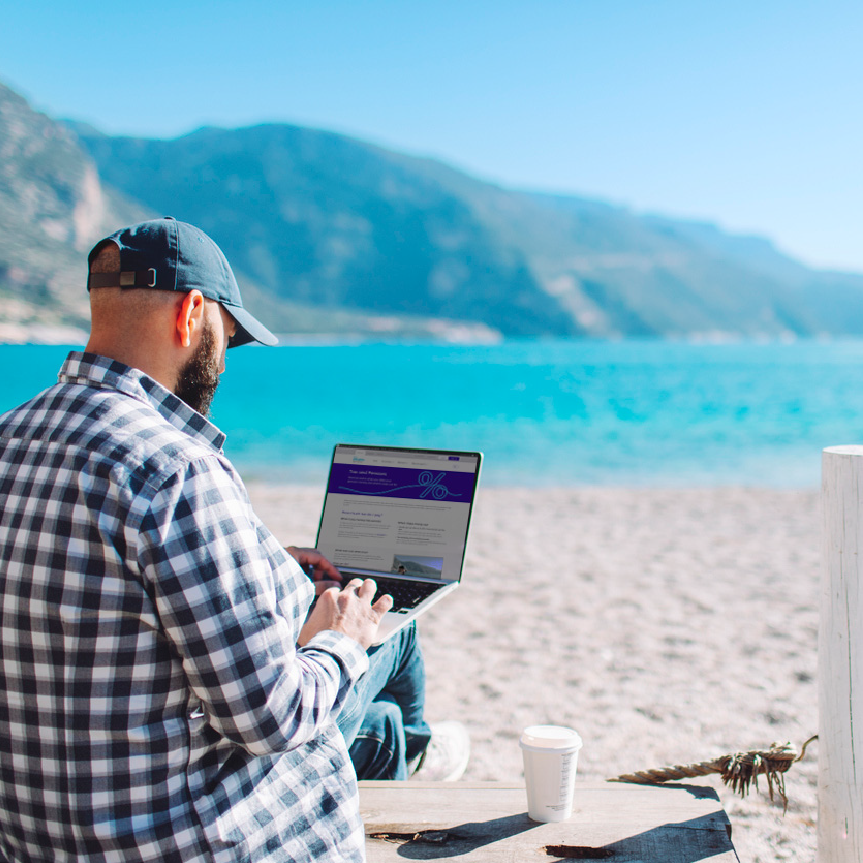When you access your pension, tax can play a big role in how much you actually receive. Understand when and how tax applies, what to watch out for, and how to make the most of your money. Stay informed to avoid surprises and take control of your retirement income.
How much tax do I pay?
When I pay money into pension
To help save for your retirement, the government doesn’t make you pay income tax on all or a lot of the earnings you put into your pension pot.
Instead of paying tax, the government gives you tax relief by topping up your pension contribution or letting you pay in before income tax is taken.
When I take money out
- Usually, you can take up to 25% of your pension pot tax-free.
This is called a tax-free lump sum. You can take up to £268,275 tax-free (unless you have special protections). - The remaining 75% is taxed as income.
This could push you into a higher tax bracket for that tax year (you won’t pay national insurance on it).
What else can affect tax?
Your taxable pension withdrawals are added to your other income, so they could push you into a higher tax bracket. You could end up paying more than necessary.

What can I do?
- Planning how you withdraw your pension can help minimise taxes. You can start by carefully considering your retirement options.
- You might wish to take your pension in smaller amounts over time, rather than all at once. For example, taking a large amount in one year could mean paying 40% or 45% tax on some of it.
But by taking smaller amounts over several years, the tax could be kept in a lower band, potentially limiting the tax to 20%.
By choosing the right withdrawal strategy, you can make sure you keep as much of your money as possible.
What tax rate applies?
Payments from the 75% of your pension pot which is taxed are classed as ‘earned income’. This means they’ll be added to the other income you receive and the rate of tax you pay will be based on total earnings.
How is my pension tax calculated?
Your tax is calculated each year based on the income you earn during that tax year, which runs from 6 April to 5 April. If tax is due, we’ll deduct it from your payment and send it directly to HMRC, so you’ll get the amount after tax.
You can find more information about income tax rates and personal allowances on the government’s website.
Watch out for emergency tax
Emergency tax can be applied if HMRC hasn’t provided your tax code yet, so they use a temporary one instead. This is often referred to as an ‘emergency month 1’ tax code, as it treats your income like it’s the first month of the tax year.
The reason you might pay a lot of tax with this code is that HMRC assumes you’ll earn the same amount each month for the rest of the year. This can happen again in future tax years. If you end up paying too much tax, don’t worry – you can claim a refund from HMRC.
Continuing to work and contribute to your pension
There are a few things you need to keep in mind if you plan to keep adding to your pension after you start taking money out. Depending on how you take your money, you could trigger your money purchase annual allowance.
Money purchase annual allowance (MPAA)
The MPAA is a limit on how much you can contribute to your defined contribution pension each year while still getting tax relief. It’s triggered when you start taking taxable money from your pension. For most people, you can contribute up to £60,000 a year or 100% of your earnings (whichever is lower) and still get tax relief — including anything your employer pays in.
But there are times when the MPAA might kick in. It depends on how you take money from your pension. If you’re planning to keep paying into your pension after you start taking money out, check the table below to see which options could trigger your MPAA.
Which options for taking money will trigger your MPAA?
Will the amount I can save into a pension and get tax relief on go down if I…
| Take a pension pot in one go (For £10,000 or less). Known as a small pot lump sum | No | Taking a pot of £10,000 or less all in one go as a small pot lump sum won’t trigger your MPAA. |
| Take a pension pot in one go (For more than £10,000). Known as UFPLS | Yes | Taking a pot of more than £10,000 all in one go will trigger your MPAA. |
| Take a bit at a time Only withdrawing 25% tax-free cash up front | No | After taking your tax-free cash, any withdrawals from your flexi-access drawdown will trigger the MPAA. |
| Take it a bit at a time Withdrawing from your flexi-access drawdown account | Yes | Taking from your flexi-access drawdown will trigger your MPAA. |
| Take a bit at a time Spreading tax-free cash across all withdrawals | Yes | From the first lump sum you take from your pension pot, your MPAA will be triggered. |
| Buy a guaranteed income Known as annuity | Maybe | In most cases, buying a guaranteed income won’t affect the amount you can pay into a pension pot and get tax relief on. |
If you take money out of your pension in a way that triggers your MPAA, we’ll let you know. You’ll then have 91 days to inform any other pension providers you have savings with. We’ll warn you about these rules when they apply to you, but it’s also wise to get guidance on this from Pension Wise, which is a free government service.
Other tax rules around continuing to save
There are some HMRC rules in place to prevent you from taking your tax-free cash and then putting it back into another pension straight away. This is known as ‘pension recycling’. If you do pay your tax-free lump sum back into a registered pension, it could lead to some hefty tax charges.
Lastly, you might want to check out the upcoming inheritance tax changes that will come into effect on 6 April 2027.
Guidance and advice
Making decisions about your pension can be complicated. To help you on the way we created a 5-step checklist with guidance and advice options.
If you need more specific help, consider talking to a financial adviser who specialises in retirement planning. You can find an adviser on the MoneyHelper website.

Your retirement options
Find out more about your retirement options before you take your pension savings.
When you can take your pension money
Normally, you can start taking money from your pension at your normal minimum pension age if you want to – but you don’t have to take it then.
Know your pension
Discover everything you need to know including insights, support, and guidance.

